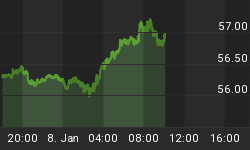In a market where many asset classes from stocks and bonds to commodities and cryptocurrencies have been taking out record highs, greed and Fear of Missing Out (FOMO) have become the main drivers while fundamentals have taken a back seat.
No one would mistake the bloodless run-up in global stock markets, credit, and property over the past eight years for an echo of the dot-com mania of the late 1990s or even a reprise of the roaring 20s. Yet, only at the peak of those two bubbles has America's stock market been more expensive as a multiple of earnings measured over a ten-year cycle.
But with ultra-loose monetary policy coming to an end in the United States and other major world economies, the experts are warning that it's best to tread carefully, a point further driven home by a worrying pandemic, the worst security crisis to face the world since WWII interspersed with nuclear braggadocio, and trade tiffs.
Here are three bearish indicators that suggest a recession could be knocking at the door.
#1. Flattening Yield Curve
The yield curve is the difference (or "spread") between yields on short-term and long-term government bonds.
In a healthy bond market, the longer the maturity, the higher the yield on bonds with similar credit risk. In other words, short-term yields are lower than long-term yields because investors expect a bigger reward for lending their money for a longer time, giving the "yield curve" an upward sloping shape.
And a blinking-red warning sign has appeared: On March 24, the yield on five-year U.S. Treasury notes was 2.40%, and the yield on seven-year notes was 2.43%. Both were higher than the 2.38% yield on 10-year Treasury notes.
An inversion in the yield curve doesn't necessarily trigger a recession, but suggests bond investors are worried about the economy's long-term prospects. Still, there's reason to be concerned because an inverted yield curve has correctly predicted every recession since 1955, with only one false signal in nearly 70 years.
#2. Runaway Inflation
Even assuming the yield curve is giving another false red flag, meaning we are not on the brink of a recession, the prognosis is not very encouraging, either.
Because the only time an inverted yield curve did not lead to a recession, it beckoned something just as bad: the "Great Inflation," which lasted all the way from the mid-1960s into the early 1980s.
U.S. inflation level has now hit 7.9%, a level last seen in 1982--around the time the last Great Inflation ended. But it could get worse still: traders are now pricing in a U.S. inflation rate heading for 8.6% through March and April before Federal Reserve officials even get a chance to deliver a possible 50 basis point interest rate hike in May.
The Fed last week delivered its first rate hike in four years, raising the fed-funds rate by 25 basis points.
"Unfortunately, this might have been the time that the market and society needed a shock-and-awe showing the Fed is still very focused on holding inflation down. To hike rates by 25 basis points, with no quantitative tightening, has almost put fuel on the fire. Main Street is saying, `We can raise prices however we want to, without regard to competition.' So far, it is right," Gang Hu, a TIPS trader with New York hedge fund WinShore Capital Partners, has told MarketWatch.
#3. Slowing House Market
So far, nothing has done much to slow down the ongoing housing boom, although not for lack of theories predicting how it's going to end.
But the red-hot housing market is now facing its biggest nemesis yet: soaring mortgage rates.
Over the past three months, mortgage rates have posted their largest jump since the '90s, with the average 30-year fixed mortgage rate currently standing at 4.42%, up from 3.11% in December.
The enticement of record low mortgage rates has been the biggest driver in the housing boom, encouraging more buyers to jump into the market. As home prices soared, low rates have been helping alleviate some of the burden for homebuyers. But with mortgage rates now climbing sharply, it's very likely to have the opposite effect by increasing buyers' borrowing costs at a time when they're already stretched thin by record home price growth.
Indeed, experts are warning that the move up rapid move up in mortgage rates amounts to a major economic shock: Ian Shepherdson of Pantheon Macroeconomics predicts a 25% decline in U.S. home sales from the annual pace of 6.02 million set in February to a rate of 4.5 million by the end of summer.
The counterargument against a recession
That said, several critical recession signals remain in the green.
First off, industrial production, a key indicator of economic strength, rose 0.5% in February to a level that is 103.6% above the 2017 average and 7.5% above what it was at this time last year.
The US purchasing managers' index (PMI), which tracks sentiment among buyers who work for manufacturing and construction firms, came in at 57.3 last month, more than 6% higher than the U.S. average over the last decade.
Meanwhile, the U.S. economic policy uncertainty index, which measures policy-related worries, also fell to 139 in February, down from over 200 in December 2021, indicating fears surrounding a policy mishap from the Federal Reserve or Biden administration are rapidly fading.
Maybe the outcome of the Ukraine crisis will be the final straw that pushes the U.S. economy into a full-blown recession or pulls it back into recovery mode.

















